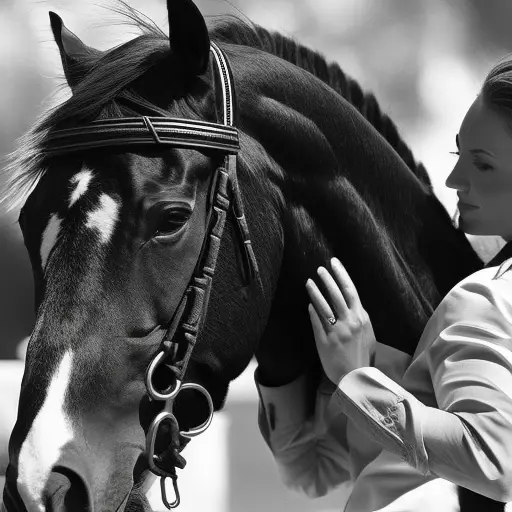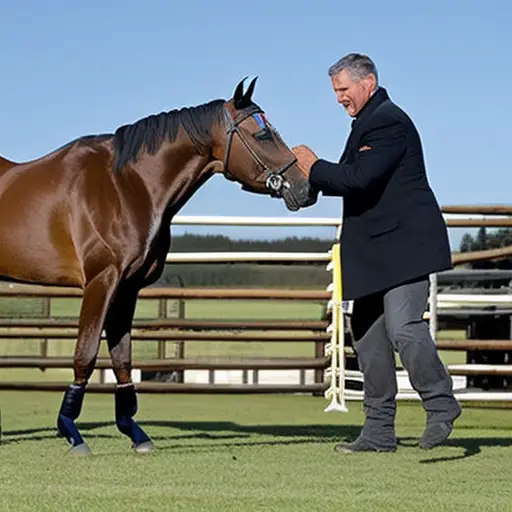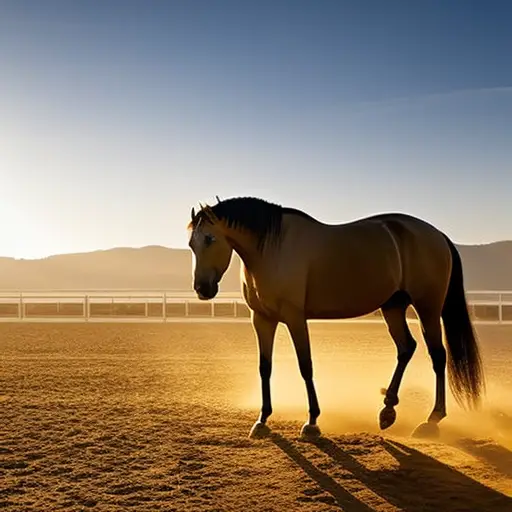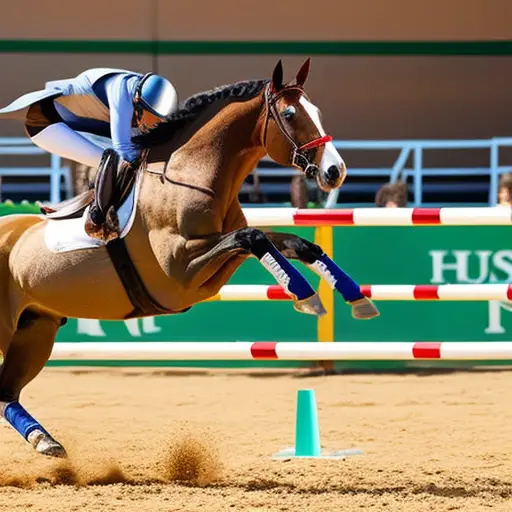Developing Softness in Horse and Rider: Techniques and Tips

Are you ready to unlock the true potential of your partnership with your horse?
Discover the secrets to developing softness in both horse and rider with our expert techniques and tips.
By establishing trust and clear communication, you’ll build a solid foundation of balance and flexibility.
With effective aids and techniques, you’ll progress towards a lighter, more responsive ride.
Get ready to experience a profound connection with your equine companion like never before.
Understanding the Importance of Softness in Horse and Rider
You should recognize the significance of softness in both horse and rider. Developing softness in horse and rider is crucial for overall performance. When both horse and rider are soft, they’re able to communicate effectively, resulting in a harmonious partnership and enhanced performance. Softness allows the rider to have better control and influence over the horse’s movements, making it easier to guide and direct them. It also enables the horse to move freely and with greater ease, leading to improved balance, flexibility, and responsiveness.
Achieving softness in horse and rider can be challenging at times. One common challenge is building trust and understanding between the two. It requires patience, consistency, and clear communication to establish a strong bond. The rider must also have a deep understanding of the horse’s body language and cues, allowing them to respond effectively to their needs and desires.
Another challenge is developing the rider’s balance and stability. Softness begins with the rider, as they need to maintain a balanced and relaxed position in the saddle. This allows them to move in sync with the horse and provide clear, gentle aids.
To overcome these challenges, it’s important to seek guidance from a qualified instructor or trainer who can provide valuable insights and techniques. They can help you develop exercises and drills that promote softness in both horse and rider, ensuring a successful partnership and improved performance.
Establishing Trust and Communication With Your Horse
Effectively establishing trust and communication with your horse is crucial for developing a strong and harmonious partnership. Building confidence and overcoming fear are key factors in creating this bond. Here are three techniques to help you build trust and improve communication with your horse:
-
Spend quality time together: Dedicate time to simply being with your horse, whether it’s grooming, hand-grazing, or just sitting quietly in their presence. This helps your horse become familiar with your presence and builds a sense of security and trust.
-
Use positive reinforcement: Reward your horse for good behavior and try to avoid punishment. By using treats, praise, or scratches as rewards, you can reinforce positive behaviors and create a positive association with you as their rider.
-
Develop clear and consistent cues: Horses are highly perceptive animals and can pick up on your body language and subtle cues. Focus on developing clear and consistent signals to communicate with your horse effectively. This will help them understand what you’re asking of them and build their confidence in your leadership.
Building a Foundation of Balance and Flexibility
To achieve a foundation of balance and flexibility, it’s important to incorporate exercises that engage and strengthen your core muscles. Improving suppleness and incorporating gymnastic exercises will help you achieve this goal. One exercise that can be beneficial is the plank. By holding a plank position for a few minutes each day, you can strengthen your core and improve your overall stability.
Another exercise to consider is the yoga cat-cow stretch. This stretch targets your back muscles and helps improve flexibility in your spine. By incorporating these exercises into your regular routine, you can build a strong foundation of balance and flexibility.
In addition to these exercises, it’s important to focus on proper body alignment and posture. This will help you maintain balance and improve your overall riding performance. Engaging your core muscles while riding won’t only improve your stability but also allow you to communicate more effectively with your horse.
Developing Effective Aids and Techniques for Softness
When developing softness in both yourself and your horse, it’s important to focus on using clear and consistent aids that encourage relaxation and responsiveness. Developing suppleness and refining the connection between you and your horse requires a combination of techniques and exercises. Here are three key strategies to help you achieve softness in your riding:
-
Establish a consistent and balanced seat: Your seat is your primary aid for communicating with your horse. By developing a secure and balanced seat, you can provide clear and effective cues to your horse. Work on maintaining a relaxed and supple position, with a deep and centered seat that follows the horse’s movement.
-
Use subtle and light aids: Softness comes from the ability to communicate with your horse using subtle and light aids. Practice using gentle rein and leg cues, avoiding any unnecessary tension or force. Focus on creating a conversation with your horse, rather than dictating their every move.
-
Incorporate lateral work and transitions: Lateral work, such as leg yielding and shoulder-in, helps to develop suppleness and flexibility in your horse’s body. Transitions, both within and between gaits, encourage responsiveness and engagement. By incorporating these exercises into your training sessions, you can gradually improve your horse’s overall softness and connection.
Progressing Towards a Lighter, More Responsive Ride
Start by gradually decreasing the amount of pressure and tension in your aids, allowing for a lighter and more responsive ride. As you aim to progress towards a lighter ride, it’s important to focus on improving the connection with your horse and enhancing suppleness.
To improve the connection, work on refining your communication with your horse through clear and precise aids. Instead of relying on strong and forceful aids, try using lighter and more subtle cues. This will encourage your horse to respond more willingly and promptly.
Enhancing suppleness is another crucial aspect of developing a lighter ride. Suppleness refers to your horse’s ability to move freely and fluidly. To enhance suppleness, incorporate exercises that encourage flexibility and relaxation.
Begin with simple bending exercises, such as serpentines and circles, to encourage your horse to soften through their body and become more responsive to your aids. Gradually introduce lateral movements, such as leg yield and shoulder-in, which further enhance suppleness and engagement.
Remember to be patient and consistent in your training. Building a lighter and more responsive ride takes time and practice. By gradually decreasing the pressure and tension in your aids, improving the connection, and enhancing suppleness, you and your horse will develop a harmonious partnership and achieve a lighter ride.
Frequently Asked Questions
What Are Some Common Mistakes That Riders Make When Trying to Develop Softness in Their Horse?
Some common mistakes riders make when building softness in their horse include using too much rein pressure, pulling on the horse’s mouth, and not properly understanding and applying the concept of lightness.
How Can I Improve My Horse’s Responsiveness to My Aids When Riding?
To improve your horse’s responsiveness to your aids when riding, focus on improving communication and building trust. By being clear, consistent, and using gentle cues, you can develop a stronger partnership and create a more responsive and willing horse.
Are There Any Exercises or Drills That Can Help Me Improve My Balance and Flexibility in the Saddle?
To improve your balance and flexibility in the saddle, try incorporating exercises and techniques that focus on core strength, stretching, and body awareness. These can help you maintain a centered and supple position while riding.
What Are Some Signs That My Horse Is Starting to Trust and Communicate With Me Effectively?
When your horse starts responding to your cues with ease and relaxation, and you feel a connection like a well-tuned duet, that’s a sign of trust and effective communication. Developing a strong bond with your horse is key.
Can You Provide Any Tips for Maintaining a Light and Responsive Ride Once I Have Achieved It?
To maintain a light and responsive ride, consistency is key. Refine your aids and communication with clear cues. Building trust is crucial, so continue to develop a strong bond with your horse.
Conclusion
Congratulations! By understanding the importance of softness in both horse and rider, you have embarked on a journey towards a harmonious partnership. Through trust, communication, balance, and flexibility, you have laid a solid foundation for a successful ride.
With effective aids and techniques, you have unlocked the secret to a lighter, more responsive ride. So saddle up and let your spirits soar as you and your horse dance together with grace and elegance.
The world is your arena, so go out there and shine!

Join Davina Gardea on a journey into the world of horsemanship. With a deep passion for horses and years of experience, Davina shares invaluable insights and techniques to enhance your connection with these magnificent creatures. Explore the art of riding, training, and nurturing a profound bond with horses at diedgone.com.






